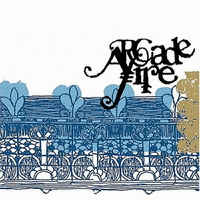
Release Date: May 10, 1994
The World Has Turned...
Buddy Holly
Say It Ain't So
In the Garage
★★★★★ Tracks:
No One ElseThe World Has Turned...
Buddy Holly
Say It Ain't So
In the Garage
I was introduced to Weezer when most everyone else was, tuning to MTV and seeing that goofy Spike Jonze video for "Undone - the Sweater Song." It was refreshing to see a group of normal, somewhat nerdy guys playing such a great song at a time when rock music was all about long, dirty hair, ripped jeans and flanel. I bought the CD soon afterwards and immediately warmed to tracks "Buddy Holly" and "Say It Ain't So." Both to eventually make it as singles and videos as the record continued to sell. Not a lot of the other tracks appealed to me as a 14-year old, and "Buddy Holly" got so played out I shelved the Blue Album for quite a while.
When I went away to college, I lugged my 300-plus CDs with me to my dorm room and began playing the Blue Album all over again. It was there I realized how great "No One Else" and "The World Has Turned and Left Me Here" were. Cuomo sums them up best himself: "No One Else" is "the jealous-obsessive asshole in me freaking out on my girlfriend" whereas '''The World has Turned and Left Me Here' is the same asshole wondering why she's gone." I couldn't wait to put them on the next mix tape to my girlfriend. Now some ten years later, I find the escapism in completely opposite fashions of "Holiday" and "In the Garage" something entirely new to relate to. And so this record continues to hold up.
While it's unfortunate the Blue Album spawned a lot of those Get Up Kids / Dashboard Confessional-type pop-punk emo bands (I listened to my fair share of them for sure, and I still listen to Saves the Day!), I don't think they necessarily meant to. Weezer just wanted to take that whole quiet-loud, verse-chorus-verse approach that the Pixies and Nirvana perfected, throw in some simple Ramones power chords, and write some poppy, harmonizing Beach Boy vocals to make rock'n'roll a little more accessible again. And this album united everyone, even the friends of mine who could only stand to listen to 2Pac and Biggie were jamming to Weezer. "Say It Ain't So" is one of those 1am bar anthems that nearly everyone will be screaming along to regardless of where you are. "Buddy Holly" was one of the best MTV videos in its existence (yes, it is dead to me now). Meanwhile those self-loathing, over-dramatic emo-rockers claiming Weezer as their primary influence completely polarized the rock landscape a few years later, sort of the antithesis of what the Blue Album is all about.







